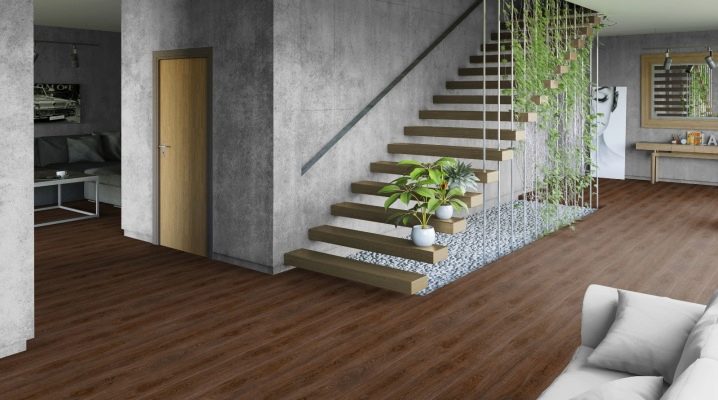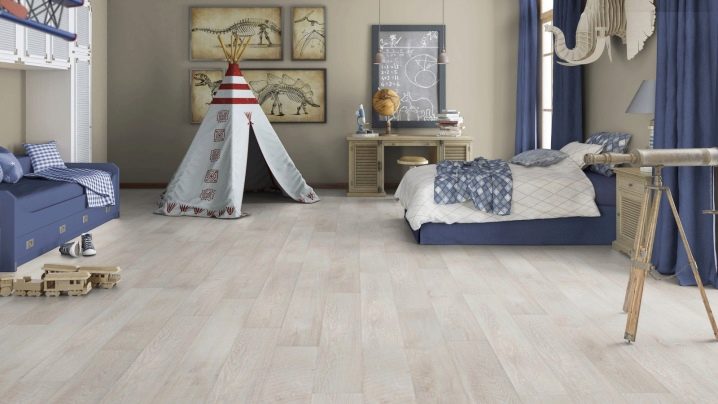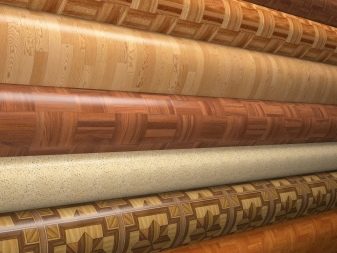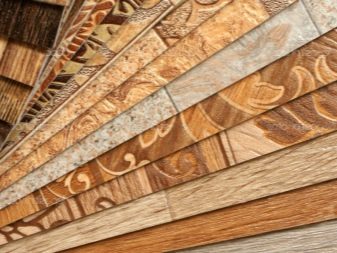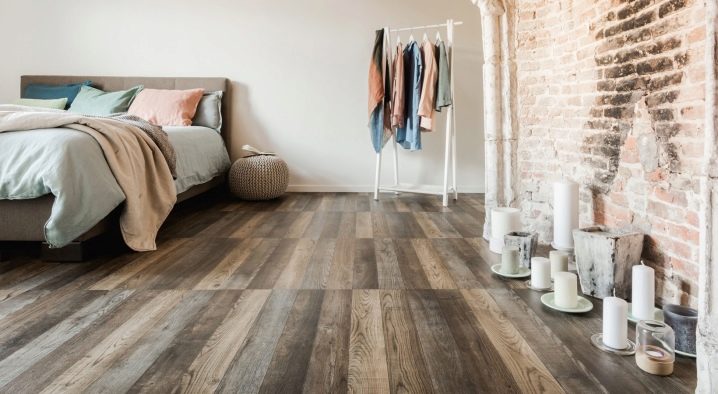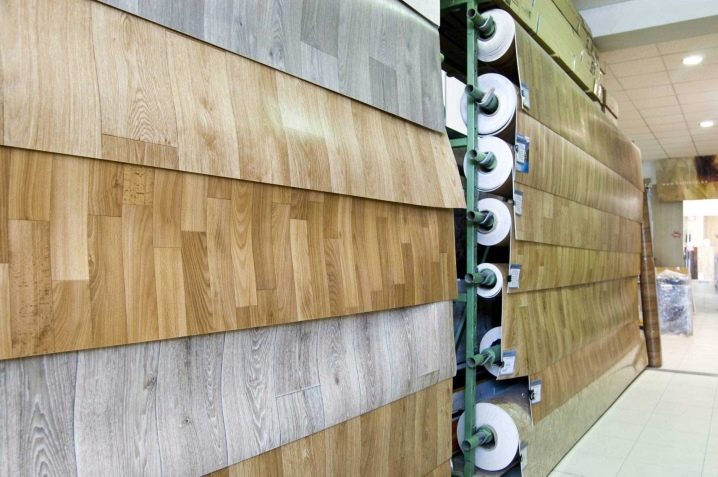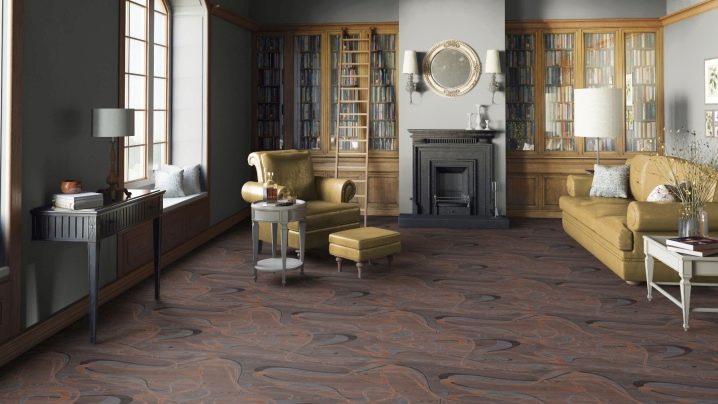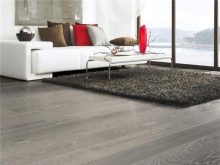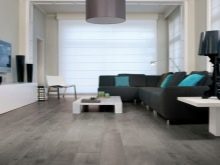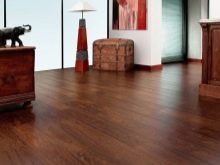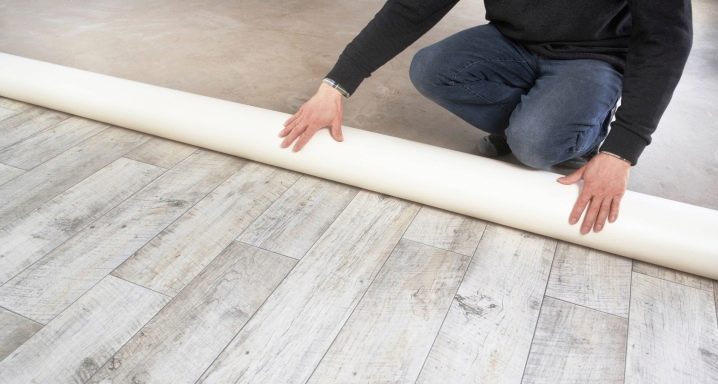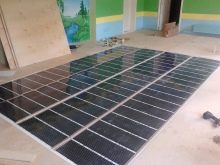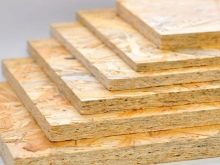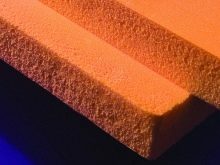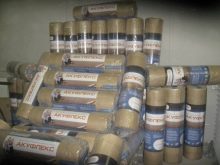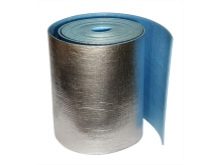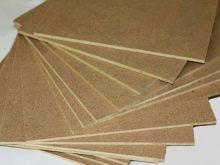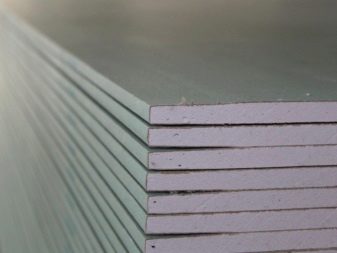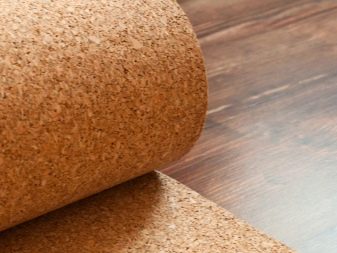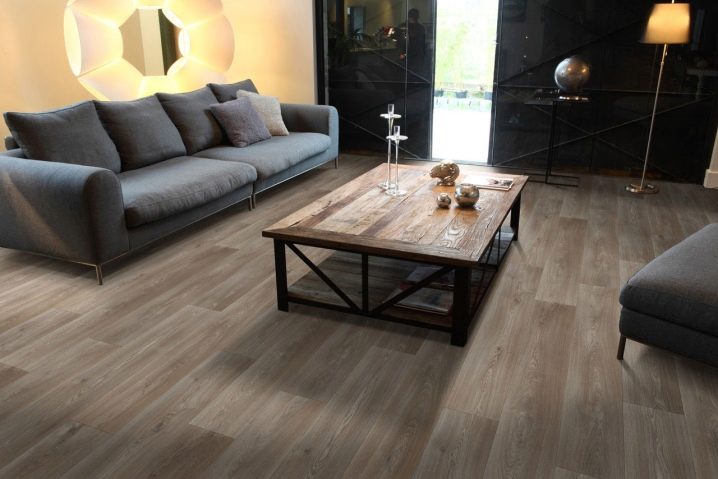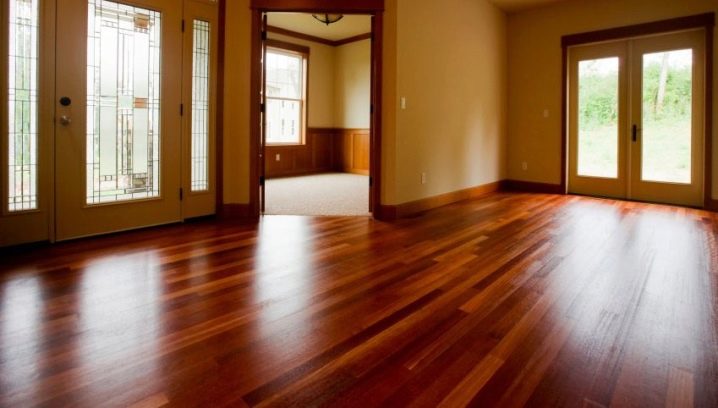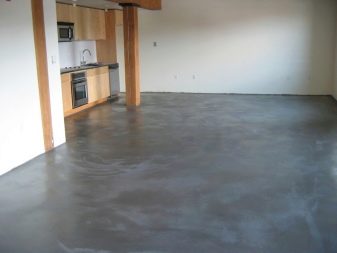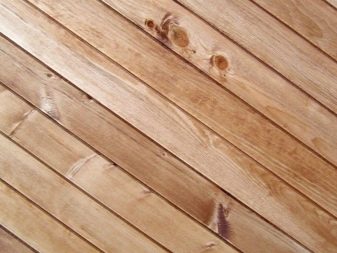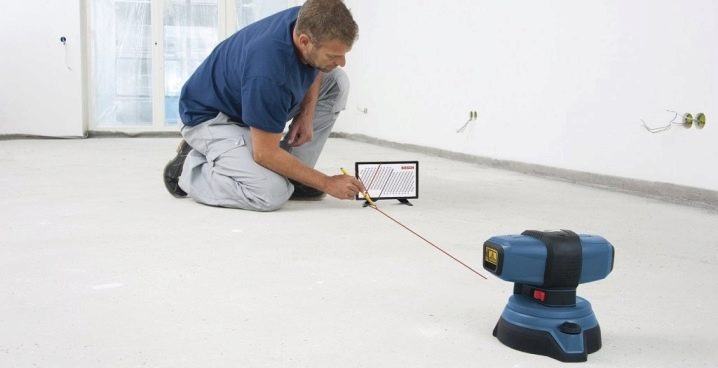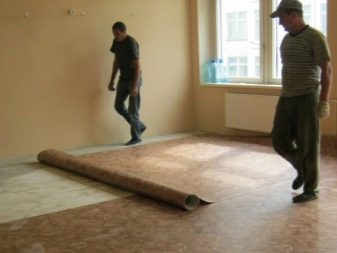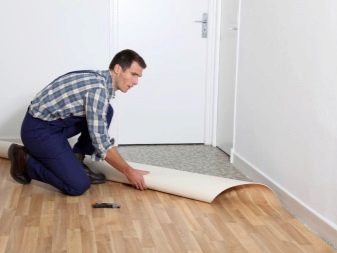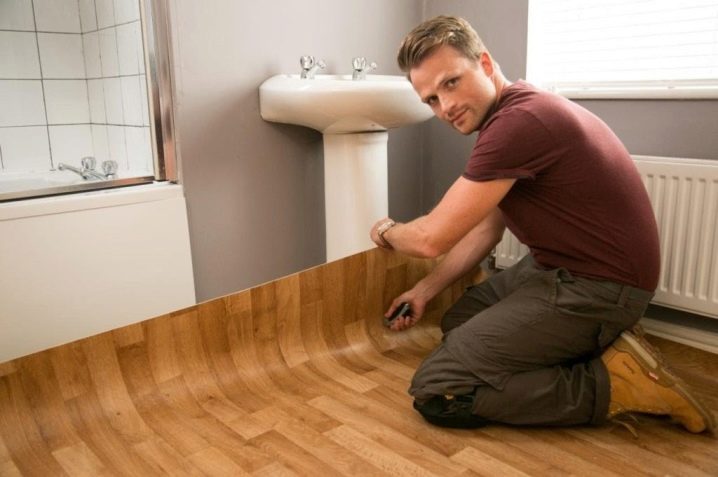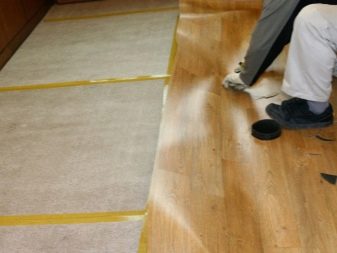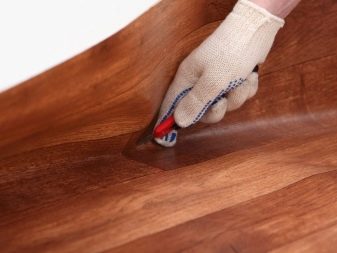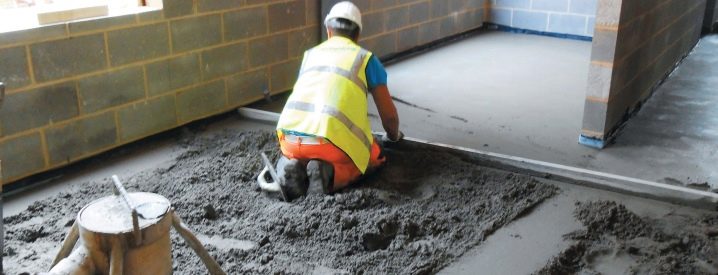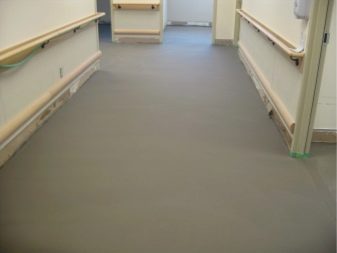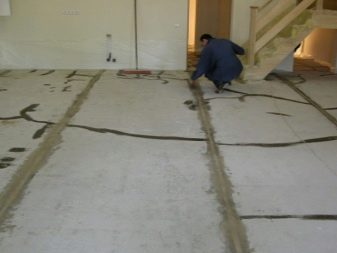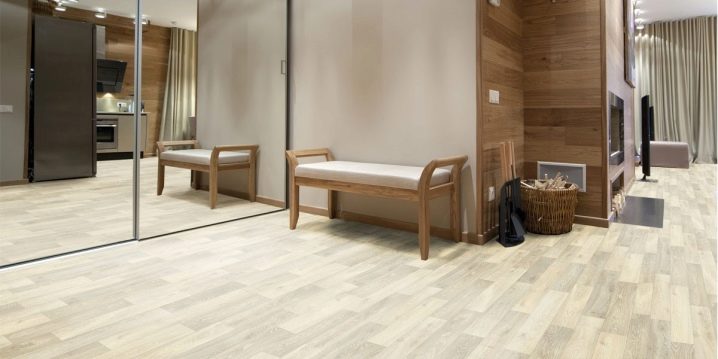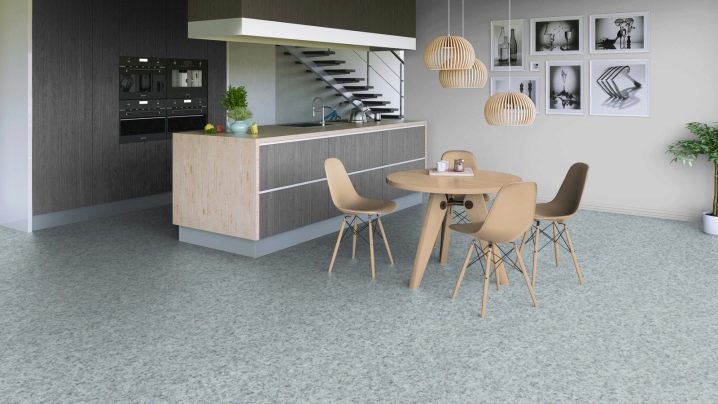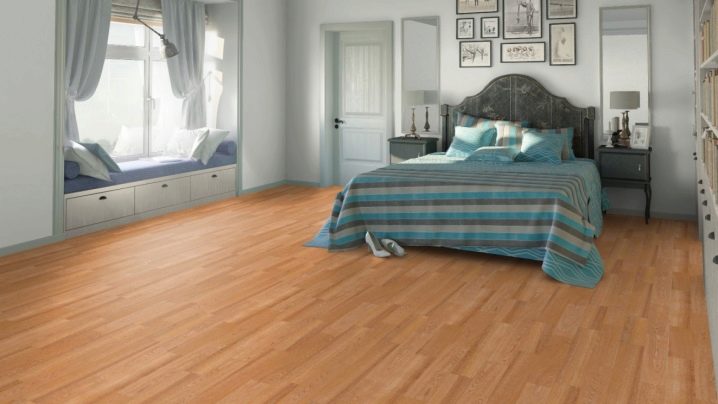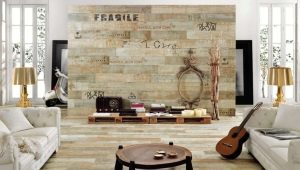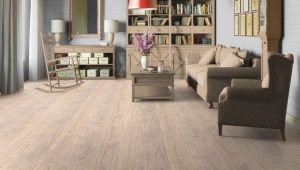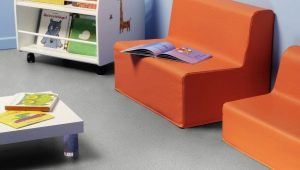What to lay linoleum?
Linoleum is a popular and affordable flooring. A wide range allows consumers to choose a model according to their own taste and preferences. In order for the floor to last you longer, it is important to follow all installation rules. Not everyone knows what it is worth laying linoleum on and this can lead to irreparable mistakes.
Types of linoleum
A very important aspect is the ability to maintain the original appearance during long-term operation of linoleum. On this basis, it is divided into several types:
- Domestic. Such linoleum is attributed to class 21-23, made on a foam base, has a multilayer structure. Such material copes well with sound insulation, it is environmentally friendly, pleasant to the touch and has a large variation of decorative design. Linoleum is quite budget and has a protective layer of 0.1-0.35 mm.It is less wear-resistant, therefore it is used only at home.
- Commercial (technical). Linoleum is ranked in class 41-43 and can last for about 10 years in a room where the permeability reaches the highest rates. This type is used in schools, trading houses and even at airports. Ecological view is not inferior to the previous one.
- Semi-commercial. The material belongs to the 1-34 class and is a certain golden mean. This coating is longer than the domestic one, but it is less whimsical when placed than the commercial one. This linoleum is used in different rooms with a typical permeability. Material from 3 layers: PVC substrate, decorative layer and PVC or polyurethane layer for protection. Warranty period - from 7 to 20 years.
Also, linoleum is divided into types based on the raw materials that are used in the manufacture of the fabric:
- Natural. The bearing part is often formed from jute fabric. It is produced in two variations: with the base and without it. Such material is fire resistant, in case of fire can prevent the spread of fire. Flaxseed oil provides bactericidal surface.It is worth noting that linoleum from natural materials is characterized by low ductility and may break during transportation.
- PVC linoleum. This linoleum is available in two variations: with and without base. The basis can be absolutely any. It is not necessary to lay the material in rooms with high temperatures - this will lead to the appearance of dents. Often used in everyday life in rooms for recreation.
- Nitrocellulose (colloxylin). Such material has no basis and is not resistant to the influence of fire. The thin coating also has advantages: good moisture resistance and high plasticity.
- Alkyd linoleum. It is made using a fabric base. It surpasses most species in its ability to suppress noise and retain heat. It should be noted that after a certain period of use, linoleum decreases in length and increases in width.
- Relin. The material combines two layers: rubber and a special mixture. The mixture includes pigments for decorative properties, fillers for insulating properties and synthetic rubber for durability.The main feature of the coating is moisture resistance and elasticity.
Linoleum is also divided into types based on what material the base is made of:
- Groundless. The coating is quite thin, because it has only one layer. Cost budget, used at home. This material should be laid on a perfectly flat surface. Use baseless linoleum in wet areas.
- On the foam basis. This coating has many layers and reaches up to 3.5 mm in thickness. Such linoleums are not glued along the entire perimeter, but only along angular points and diagonal lines. Linoleum calmly reacts to high levels of humidity in the room. Places of seams are recommended to be welded.
- On a warm basis. Such a base can be made from both natural and artificial materials. As a rule, it is jute or felt. The coating has a top polymer layer for protection. Thickness of a cloth is not less than 5 mm. Creeps in households with a normal level of humidity, this is due to the high ductility and ability to retain heat. It is recommended to lay without seams, continuous sheet.The canvas is applied taking into account the peculiarities of the expansion.
The modern market also offers special types of flooring:
- Antistatic. The only type of linoleum that is permissible to lay in rooms with high voltage equipment. The material prevents static electricity and dust accumulation.
- For Sport. The top layer is made of wear-resistant polyvinyl chloride. Durable, safety and elastic linoleum retains its original appearance despite increased loads.
- Polymeric bulk floor. Innovative invention looks like linoleum, with direct tactile contact resembles a tiled floor. Thickness over 1.5 mm ensures long life and impact resistance. Thanks to environmental friendliness and water tightness it can be used in any premises.
- 3D linoleum. Also considered a completely new invention. You can create an imitation of paving stones or apply any image. Experts say that such a three-dimensional image can visually increase the space of the room.
What can be laid under linoleum?
Before many ordinary people it becomes a rather difficult question - what to lay on the floor before laying linoleum? Beginners may be confused: some believe that it is not necessary to lay the bed, others - it is necessary to forgive the substrate. To resolve the issue, you should find out the properties of various materials under linoleum.
The substrate must be necessary to eliminate irregularities. It can be used for thermal and sound insulation. Characteristics of the substrate floor linoleum:
- Film floor (infrared). Such a popular method of floor heating does not require floor screed. The material consists of a thermofilm, it is based on carbon heating elements with a cross section. This litter saves about 20% of energy.
- Oriented strand boards. Lightweight OAB material is resistant to moisture, is not afraid of mechanical damage and is not deformed during operation. Installing such plates is quite simple, beginners can handle it. When working requires caution, when bent can break. It is important to note that some cheap specimens are environmentally hazardous.
- Penoplex. Please note that Penoplex is a company that manufactures extruded polystyrene foam. One of the best means for thermal insulation. The material is not afraid of moisture, does not absorb water. Installation does not require special skills that attract non-professionals. Penoplex has soundproof properties. The material itself is not harmful to health, but styrene in the free state is very toxic. Experts recommend approaching with full responsibility to the choice of material and tightly close it with a safer material.
- Penofol. Consists of a layer of foamed polyethylene and a layer of aluminum foil. The material reflects thermal radiation. This material is more suitable for installation inside the dwelling, it does not pose a health hazard. Remember, "Penofol" - the name of the manufacturer, and not insulation.
- Akuflex. The material for sound insulation of the floor, has a fibrous structure and is realized in rolls. Due to air circulation, acuplex prolongs the life of linoleum. It is quite simple to spread such material, professional skills are not required.
- Hardboard Is a kind of chipboard (fibreboard).Pretty simple and unpretentious material. Attracts its availability and low cost. It is better to refuse it if you put linoleum in a room with high humidity.
- Gypsum fibrous sheet (GVL). Such material is resistant to moisture, temperature and burning. Dense and massive material is flexible and provides heat preservation, noise suppression. Due to its environmental friendliness, the material is often placed under linoleum in an apartment.
- Cork coating. Such material is made from crushed oak bark. By production synthetic additives are not used. Cork coating is distinguished by its ecological purity and durability. Attracts consumers with high heat retention and sound insulation properties.
Types of floors: what is better to put under the linoleum?
In order to decide which floor to choose under the flooring, it is necessary to determine its characteristics.
The basis for linoleum should have the following characteristics:
- Hardness and strength.
- Dryness.
- Maximum flatness of the surface.
- No traces of grease, oil, paint.
Consider the most popular floors for linoleum:
- Concrete floor. Such a base must be leveled with special mixtures, you will need a primer. After leveling you need to wait about 30 days until completely dry. You can not lay linoleum on wet concrete. Concrete floor can not be leveled by applying sheets of plywood, chipboard or other wooden material. They will absorb moisture and deform during operation. You can lay dashboard.
- Wooden floor. Such a basis is also acceptable. The board floor may have irregularities, they are corrected by the imposition of plywood. Sheets should be about 12 mm thick. Occasionally, laying of hardwood (a type of fiberboard) is used. If the boards are well preserved - alignment is not required. Minor flaws can be corrected with putty. Floor cake will also improve sound insulation properties.
- Old linoleum. Such a base can occur if the old coating has no damage, keeps well. Before decking the surface needs to be degreased, then glue can be applied. If the old coating is in poor condition, then it cannot serve as the basis for linoleum.
- Ceramic tile. It is a very good base and substrate.If the floor is damaged, then apply a leveling compound to the tile. After everything is dry, you should use sandpaper, and do not forget to remove dust.
- Infrared floor Infrared heating floor is divided into 2 types: film and rod. Film coverage is quite budget, it is a good option for those who have modest funds. Rod floor - self-regulating. Flexible designs are built into thermocouples with conductive tires. When heated, the elements emit infrared rays.
- Drywall The material has several advantages. Among them is the dry method of finishing, which is so important if you decide to lay linoleum on it. Such material is laid on a wooden floor.
Before you put drywall, leave it in the room for 12 hours. The material must come into balance with the microclimate of the room.
There are cases when you need to put linoleum on the carpet. This is possible, but not every type of linoleum will suit you. Moreover, the base should be thoroughly cleaned from dust.
How to lay linoleum with your own hands?
Before laying linoleum need to carry out the preparatory work:
- Inspect the surface of the floor and evaluate its condition.
- Make sure that dirt and dampness will not harm future linoleum. If you put the coating on a dirty base, it will serve you very little and quickly become useless. Therefore, treat this stage especially responsibly.
- Sometimes the floor surface needs to be primed, and sometimes it can be necessary to putty.
Further, the surface should be treated with special compounds:
- Flame retardants Such substances are necessary to protect the material from ignition and any kind of ignition. Such substances do not guarantee that the material will not ignite. The main task of the flame retardants is to slow down the ignition. Such processing is especially important for a wooden base.
- Antiseptics. Such compounds are designed to prevent the occurrence of fungi and other pathogens. This is an important stage of processing.
- Waterproofing compositions. Such mixtures protect the base from water and steam, reduce permeability. This stage is important both for a wood basis, and for concrete.
Put linoleum is not difficult. It is enough to cover the entire surface of the floor with a small gap on the walls.
It is important to study the various methods of attaching the material to the base and connecting the fragments together.
If the seams will not be closed with a decorative strip, it is necessary to make an even cut.
Do it like this:
- Lay the rolls flush with each other.
- Apply a special anti-slip tape or simple household tape under the place of the future cut.
- Put pieces of linen on top of each other with overlapping edges of 4-5 mm.
- Using a sharp knife, cut in the middle.
- Insert glue into the seam and firmly press both edges to the base.
Fix the linoleum on the floor in two ways:
- Without sticking. In rooms with a small area, you can expand the sheet on the entire surface and fix the skirting. If the plinth is made of plastic, then use additional fixation - staples, glue, liquid nails.
- With the use of glue. Here the sheet of linoleum is simply coated with glue.
Do you need screed floors?
Uneven floor can not be the basis for linoleum. Putty helps to hide small bumps. If the problem is pronounced, the screed is simply necessary. Pouring concrete on the floor is quite simple, it will take no more than 1 hour of your time.This composition is leveled itself, you only need to let it dry.
It is important to know how long the concrete screed dries. As a rule, you should leave the design for 28 days.
What bulk floor to choose under linoleum?
Bulk floor is a polymer mixture, it is divided into types:
- Based on methyl and methacrylic resins.
- Epoxy resin base.
- The combination of acrylic and dry construction mixtures.
- Mix with polyurethane as a basis.
For domestic purposes, use the latest type of self-leveling floor. Polyurethane is a durable, lightweight and reliable material. The minimum layer thickness is 1.5-2 mm, so the necessary strength is ensured. People who put linoleum on such a basis, leave only positive feedback.
Examples and options in the interior
A wide range of linoleum allows you to create a unique design in any room. In rooms for recreation, you can lay the material that looks like laminate. This coating looks very natural, but much cheaper and easier to clean.
For kitchens and bathrooms, many prefer linoleum with an imitation of tile covering. Such products completely repeat the intricacies of the tile lines of any complexity.Also in the kitchen look great coating with imitation of natural material: stone, wood, granite or marble.
In modern areas of design canvases with design images are often used. Such material can be made to order or choose the appropriate option among the available range. Much of the choice depends on the overall interior of the room.
You will learn more about what to lay out a dinoleum in the following video.
